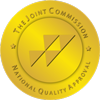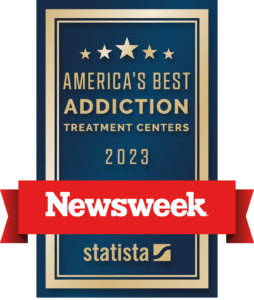Chronic pain affects up to 50 million people in the U.S., even though it’s hard to control and often misunderstood. For people who experience chronic pain, opioids are usually the go-to choice for relief. As effective as these are, though, they also carry multiple side effects and are prone to addiction. Doctors wrote opioid prescriptions for about 260 million people, and 2 million of those people ended up developing an opioid addiction.
Learn how painkiller addiction can stem from chronic pain. We at Sana Lake Recovery can give you the best program for pain management and addiction treatment.
Acute vs. Chronic Pain: What’s the Difference?
Acute pain is the normal pain you feel when you injure yourself, while chronic pain is more severe. Acute pain doesn’t last long and it happens suddenly, like when you burn your finger on a stove, hit your thumb with a hammer, or break your arm. Once an acute injury has healed, the pain will stop. Acute pain is considered by doctors to be “good” pain since it lets you know that you have an injury.
When pain becomes chronic, however, it’s a disease. Chronic pain is typically diagnosed after three to six months of consistent pain, and it can even last years.
What Causes Chronic Pain?
It’s not always clear what causes chronic pain, but it can happen when a disease or medical condition alters the nervous system. As a result, the body can then feel more sensitive to pain, and certain sensations can last longer or feel more severe than normal. Chronic pain can also result from a serious injury or infection, or even a surgical incision.
Here are a few examples of medical conditions that cause chronic pain:
- Migraines: While headaches can be an occasional nuisance, migraines are recurring headaches that can last anywhere from a few hours to three days. Migraines affect about 15% of people all over the world.
- Lower back pain (LBP): There isn’t always a cause for lower back pain, but in many cases it’s caused by long-term joint or muscle strain. Although 40 to 90% of people with LBP have no pain after six weeks, chronic LBP lasts more than 12 weeks.
- Arthritis: Arthritis is a disease that affects the joints. Symptoms include swelling, redness and low range of motion. Osteoarthritis and rheumatoid arthritis are the two most common forms of the condition.
- Cancer: Since cancer can be extremely painful, opioids are often chosen to help relieve severe symptoms.
- Fibromyalgia: Fibromyalgia involves musculoskeletal pain throughout the body and tends to heighten painful sensations. People with fibromyalgia experience chronic pain and are more likely to get the condition from child abuse.
- Shingles: Shingles is a viral infection that causes painful rashes and itchy blisters. Shingles comes from the same virus as chickenpox, and you’re more likely to get it if you’re under a great deal of stress or you’ve had a critical injury.
You should talk to your doctor if you’re experiencing pain that lasts longer than expected. He or she needs to treat it as soon as possible so that the pain doesn’t get worse.
Signs and Symptoms of Chronic Pain
Chronic pain can take many forms and feel anywhere from mild to extremely painful. Signs and symptoms of chronic pain include:
- Sinus pain
- Pelvic pain
- Neck pain or backaches
- Pain after an injury
- Headaches
- Shoulder pain
- Fatigue
- Weakened immune system
- Nausea
- Decrease in appetite
- Mood swings, anxiety and depression
- Inability to participate in many activities
The Psychological Effects of Chronic Pain
Living with chronic pain doesn’t only cause physical strain; it can also cause plenty of mental anguish. Dealing with constant painful sensations can be debilitating and limit the way you live your life. It’s not uncommon for people with chronic pain to become depressed or get anxious about the next time symptoms will flare up.
When someone with chronic pain gets anxious or depressed, neurotransmitters like dopamine, serotonin and oxytocin decrease, and this can lead to an increase in severe pain symptoms.
These neurotransmitters are the body’s natural painkillers, so when they decrease it can mean more trouble for the person suffering. At this point, people with chronic pain can start taking their pain management to a dangerous level by misusing painkillers.
Commonly Misused Pain Medications
Although medication treatment for pain management can be helpful, certain prescriptions can become addicting, especially opioids. Here is a shortlist of the most commonly misused prescription meds for pain management:
- Opioids
- Oxycodone (OxyContin), oxycodone/acetaminophen (Percocet), hydrocodone/acetaminophen (Vicodin), oxymorphone (Opana), hydromorphone (Dilaudid)
- Diazepam (Valium) – This is a benzodiazepine (sedative) that’s usually prescribed for anxiety disorders, but it’s also used for several other medical reasons.
- Pentobarbital sodium (Nembutal) – This is a barbiturate used before surgical procedures and to manage insomnia.
Why Are Opioids Used for Pain Management?
Opioids have long been doctors’ first choice for managing both acute and chronic pain. Opioids block pain receptors by interacting with the brain’s chemical makeup and the central nervous system. These drugs increase levels of dopamine in the brain and release feelings of relaxation and happiness, while also slowing down heart rate, blood pressure and breathing.
Even though painkilling prescription drugs are often provided by doctors, only 58% of people with chronic pain feel relief from them. There are many synthetic opioids available on the market, but the following are the ones most prescribed for pain.
Codeine
Codeine is used to treat mild to moderate pain. It’s usually found in cough syrups and can also treat diarrhea. Some side effects of codeine include constipation, lightheadedness,
Morphine
Morphine is prescribed for both acute and chronic pain. It can be used to alleviate labor pains and pain from a heart attack.
Methadone
Methadone clinics provide people with this medication so they can recover from opioid addiction. It’s also used to treat moderate to severe pain.
Oxycodone
Oxycodone (OxyContin) is used to relieve moderate to severe pain. Oxycodone is also available with acetaminophen (Percocet), aspirin, ibuprofen and naloxone, which also helps stop heroin overdoses.
Hydrocodone
Hydrocodone is a fairly potent opioid used to treat both acute and chronic pain, and it can be used as a cough suppressant as well. It’s also combined with acetaminophen to make Vicodin.
Fentanyl
Fentanyl is the most widely used synthetic opioid in medicine as of 2017, and it’s also one of the strongest opioids. It’s used to treat chronic pain like cancer pain. Fentanyl is one of the most potent opioids on the market.
Side Effects of Opioids
Some side effects of taking opioids for pain management include:
- Impaired coordination and thinking
- Dizziness
- Nausea
- Constipation
The most dangerous side effect of opioids is that they are highly addictive.
The Problem with Pain Management and Addiction
Opioids can be highly addictive, and people dealing with chronic pain can become addicted to painkillers. People who take opioids for pain management don’t intend on developing an addiction. Unfortunately, this ends up happening with a lot of users. Doctors will usually only prescribe opioids on a short-term basis so that addiction isn’t a possibility, but these medications are still powerful.
When drug dependent persons take opioids, they usually work at first. The user starts to feel better because of the pain medication and they begin to have a new lease on life. However, they can eventually build a tolerance and require more and more to achieve the same effect. Oxycodone, hydromorphone, fentanyl and oxycodone/acetaminophen (Percocet) are some of the most commonly misused opioids for pain management.
Alternative Treatments for Pain Management
Although opioids are usually the first choice for managing chronic pain, you shouldn’t use them if you’re addicted to them or at risk for developing a dependence. Fortunately, there are other options. However, some of the alternatives listed below might not be effective for your specific severe pain. Chronic pain must be managed carefully and comprehensively since it can affect how you function daily. Talk to your doctor to see what might be the best medication option for you.
Prescription-strength nonsteroidal anti-inflammatory drugs (NSAIDs)
NSAIDs have long been used to manage acute pain, but it usually takes prescription-strength NSAIDs to take care of chronic pain. NSAIDs are usually taken in pill form, but they also come in topical forms like creams and gels.
Common NSAIDs include:
- Acetaminophen (Tylenol)
- Ibuprofen (Advil, Motrin)
- Celecoxib (Celebrex)
NSAIDs are also often combined with opioids like oxycodone and hydrocodone to relieve pain, but as opioids can be addictive, use them with caution.
Serotonin and norepinephrine reuptake inhibitors (SNRIs)
SNRIs treat chronic fibromyalgia and musculoskeletal pain, as well as depression. SNRIs include venlafaxine (Effexor) and duloxetine (Cymbalta).
Anticonvulsants
Anticonvulsants like gabapentin, pregabalin and phenytoin are used to treat epilepsy. It’s believed that anticonvulsants change how pain signals flow throughout the body.
Holistic medicine
Some practitioners feel that holistic or alternative medicine is a better option for treating chronic pain than traditional medication. Tai chi is believed to relieve stiffness and low back pain, and it’s also known to improve the quality of life in people with bone conditions like osteoporosis.
Other forms of holistic medicine thought to improve chronic pain include:
- Acupuncture
- Massage
- Yoga
How to Treat Chronic Pain and Addiction at Sana Lake Recovery Center
For so many people suffering from chronic pain, pain management and addiction treatment unfortunately go hand in hand. Sana Lake Recovery Center understands this, and our clinical staff can help you get rid of your pain medication addiction for good.
When you enter our center and are evaluated by our staff, you’ll first undergo medical detox. This will cleanse your body of harmful toxins from the pain addiction medication you’ve taken. Medical detox is a safe way for people to stop using drugs since it’s under the constant supervision of medical professionals.
Once detox is complete, there is still work to be done. Therapy and aftercare programs are key to mitigating your psychological drug dependency and helping you find ways to healthily deal with your chronic pain.
- Individual therapy: Here, you can have one-on-one time with your counselor, who will help you discover why you developed an addiction to painkillers. He or she will also show you how to best cope with your chronic pain when it’s at its worst.
- Group therapy: Group therapy will place you with other people who have chronic pain and deal with addiction. A counselor will lead your sessions and give each member a chance to discuss how chronic pain has affected their lives.
- Holistic medicine: As mentioned earlier, holistic or alternative medicine can be a good solution for pain management. The point of holistic medicine is to achieve balance of the spirit, body and mind.
- Mindfulness
- Journaling
- Yoga
- Nutritional therapy
Dealing with Chronic Pain in Recovery
Recovering from a painkiller addiction doesn’t necessarily mean that your chronic pain will go away. If you are still dealing with chronic pain while in recovery, here are a few tips:
- Regularly attend counseling sessions. Therapy will teach you new life skills and ways for coping with your chronic pain, as well as how to balance your emotions.
- Work on your problem-solving skills. Look at dealing with your chronic pain as a way of growing. How can you solve your problems effectively?
- Eat balanced meals. Nutritious food can do wonders for your physical and mental well being. Aim for foods that are low in saturated fats and refined sugars, high in protein, and rich in nutrients.
- Find a support group. Narcotics Anonymous and other support groups can bring you to like-minded people who have also suffered from painkiller addiction.
Get Quality Pain Addiction Treatment Today
Are you addicted to prescription medication as the result of a medical condition or accident? Don’t worry. Although addiction is a tough disease to fight, it’s not impossible to beat. Sana Lake Recovery Center has the tools you need to escape the cycle of addiction and get you on the right path to long-term recovery. Contact us today to learn more about our services.



